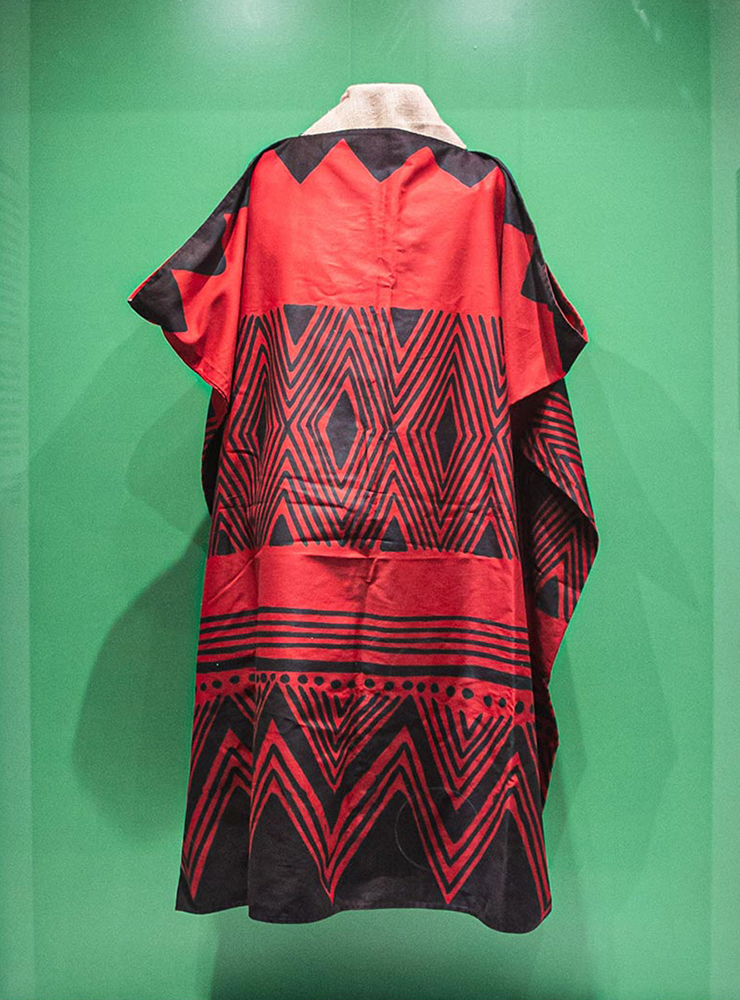You are in:
#WeAreTheAmazon
How to browse

Click on the icons to move around the room or to access points of interest. Alternatively, use the arrow keys to turn, go forward, and go backward.


Click and drag the image to explore the scene in 360°.
Alternatively, use the arrow keys to turn left and right.


Use the scroll wheel to zoom in or out.
Alternatively, use the plus and minus keys.

Virtual Tour / Ashaninka Garment - Kitharentsi
Ashaninka Garment – Kitharentsi

Weaving has always been present in the daily life of the Ashaninkas. They are a warring tribe living in a vast region in Acre, from “Alto Juruá” (Upper Juruá) to the right riverbank of the Envira River, in Brazilian lands. However, most of these tribe people live in Peru. The most important garment woven by these women is named the kitharentsi, also known as kushma or cushma by non-indigenous people. Pawa, God the Creator, left this as a legacy to the Ashaninka women.
This garment is a central element for defining the identity of these people and to weave them can take months or even up to one year. Nowadays, the female garment is made from industrialized cloth, but it is still decorated with paintings and Ashaninka ornaments displaying diverse cultural meanings.
In the audio recording, you can listen to the statement by Francisco Piyãko, a leader of the Ashaninka people.
testimonial
Francisco Piyãko, leader of the Ashaninka people
From the standpoint of the Ashaninka origin, we have a story to tell that says we have a creator, and a nature. It created us. And we have always lived in that place. And our population was increasing, and we were expanding, long before the existence of the white man here in this region.
We have an origin as we are children of this land; this nature and all the teachings that came from it. Everything is linked to our behavior: our clothing, social format, and all this knowledge… We plant cotton, and then we harvest cotton, we make the threads, the threads that not only go into the fabric, but they are used in many other things in our village.
And now focusing more on the subject of fabrics, we’re now capable of a technique to make much greater and more complex drawings, as well. You get it, you make it… Take it from the forest, any colors you want. You take the fabric color fixer for the fabric you are making, and you also take the drawing from the forest for expressing that on your clothes, what you wish to portray as a strong element for you to display. So let’s talk about the clothing we have here today. This clothing, it shows the picture that is taken from an image of a “Kenpiru” picture, it’s a kind of snake. So that displays it. When you see, a person who tries to inspire a strong person, a person who needs to attract… who attracts attention through one’s detailed drawing and what makes one feels a little like one wishes to express through their clothes. Every day you draw a different picture because it portrays everyday life. But our clothes, they show this… When you’re drawing it, you’re imagining the clothing will portray those drawings to you. You identify an animal, you identify a species. So you are looking for something in the clothes… You have “Konperu” , “Konperu” is the name of a bird I don’t know how to say it in Portuguese or English, it is much more connected to a young spirit.
In women, they choose an element of nature to define what they identify with as a pattern for their clothes. We are looking here at a female outfit. So, this drawing was made… I don’t know if it’s the drawing, but this is what’s done, as the plant colors are extracted from nature, from tree bark, from clay, she gets the colors and makes the drawings. It’s a way for her to express her feminine side and her warrior spirit as well.
Men do the same things… They wear other designs, another format and another order, and they also express other meanings. So each world is its own world in the Ashaninka world.
So when we look, for those of you who are able to understand, you notice in that drawing, that image is expressing a message. So each element is linked to a message to be recognized in nature. And beings who express, who are recognized very prominently in this coexistence of our Ashaninka world and nature. So when you look at someone else, the other person already sees you deeply. When he is Ashaninka, he knows, and he identifies what spirit you are in at that moment. It is very profound. Maybe, I’ve taken a very broad approach to these drawings, what they represent, because it’s all connected to nature.

